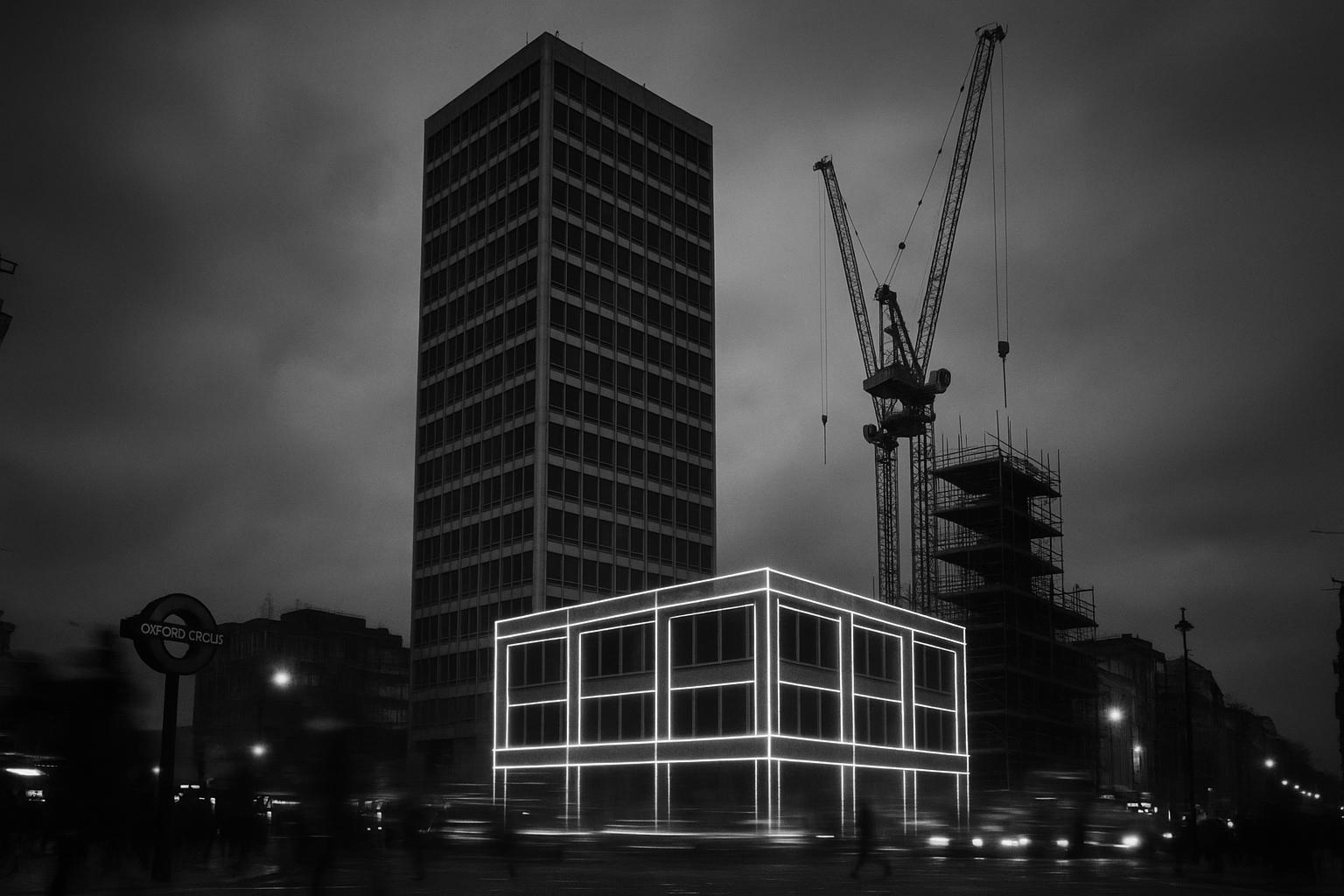Berkeley Estate Asset Management has lodged proposals, designed by Kohn Pedersen Fox (KPF), to comprehensively refurbish and extend the landmark 1960s building at 33 Cavendish Square beside Oxford Circus. The scheme would retain the site’s 21‑storey modernist tower and part of the existing lower block while replacing the Oxford Street podium with a new seven‑storey block intended to stitch the tower back into the high street. According to the original report, the move is pitched as a long‑term investment in the West End’s commercial and cultural fabric.
The submitted designs set out a clear mixed‑use ambition for the site. Ground‑floor frontages on Oxford Street are proposed for food and beverage uses and refreshed retail, with upper levels delivering high‑quality Grade A office accommodation. The lead project description states the development would provide roughly 75,000 sq m of office floorplate above a 3,500 sq m cultural and creative hub that includes an auditorium and flexible event space. KPF’s draw on the retained massing of the tower is framed as a retrofit approach that keeps more than half of the original structure while modernising the street edge.
On cultural provision the public accounts vary. The developer’s outline describes a sizable creative hub around a new triple‑height public atrium with an auditorium and makers’ studios; another project briefing allocates roughly 25,000 sq ft for cultural uses and envisages a 300‑seat auditorium, makerspaces and studios. Industry reporting also presents larger totals for flexible creative workspace. Those differences reflect early‑stage reporting of a complex, multi‑component brief rather than a settled, final schedule of accommodation.
Berkeley has assembled a broad technical and delivery team as the designs move toward a planning application. Public documents list consultants including planning adviser Newmark and engagement specialist Kanda; the wider delivery team named in later briefings includes quantity surveyor Core Five, project manager Gardiner & Theobald, structural and services engineers Elliott Wood and Arup, and facade specialist Tavenor. The developer anticipates a multi‑year programme of works, with one industry source describing a potential four‑year delivery timeline from consent to completion.
The proposals are being presented explicitly as part of a push to revive Oxford Street’s fortunes after a steep fall in footfall since the Covid pandemic. Speaking to BD Online, KPF principal John Bushell said the plans represent “an important step in the rejuvenation of Oxford Street” and argued the transformation would “provide greatly improved retail space to help attract world‑leading brands into the ‘nation’s high street’, and a dedicated space to promote creativity and innovation.” Berkeley has opened a public consultation and said it expects to submit a planning application later in the year. The developer also predicts the project would support thousands of construction and operational jobs.
Reporting to date places the overall scale of the scheme in broadly similar territory but with varying figures. Some briefings echo the headline 75,000 sq m office figure and the 3,500 sq m cultural hub; others describe a near‑million‑square‑foot mixed‑use scheme that combines around 800,000 sq ft of office accommodation with more than 120,000 sq ft of high‑street retail frontage. Estates Gazette has additionally framed the proposals as net‑zero aligned and explicitly targeted at cultural, tech and digital occupiers, presenting the redevelopment as a cultural‑economic intervention for Westminster’s western high‑street. These discrepancies are typical at the pre‑application stage, when different write‑ups draw on varying versions of the brief and on metric or imperial conversions.
For Westminster and the West End the project would be one of the most significant redevelopment proposals currently under consideration, covering a prominent island site at a gateway junction. The planning application that Berkeley is preparing will be the moment when floor areas, cultural commitments, net‑zero assertions and job‑creation estimates are tested against planning policy and the council’s cultural strategy. Until then the scheme should be read as a major developer‑led proposal that aims to reconcile retention and retrofit of a 1960s tower with a reinvigorated Oxford Street frontage and a substantial office offer.
📌 Reference Map:
Reference Map:
- Paragraph 1 – [1], [3]
- Paragraph 2 – [1], [2], [3]
- Paragraph 3 – [1], [4], [6]
- Paragraph 4 – [4], [1]
- Paragraph 5 – [1], [5]
- Paragraph 6 – [6], [7], [1], [3]
- Paragraph 7 – [4], [5]
Source: Noah Wire Services
